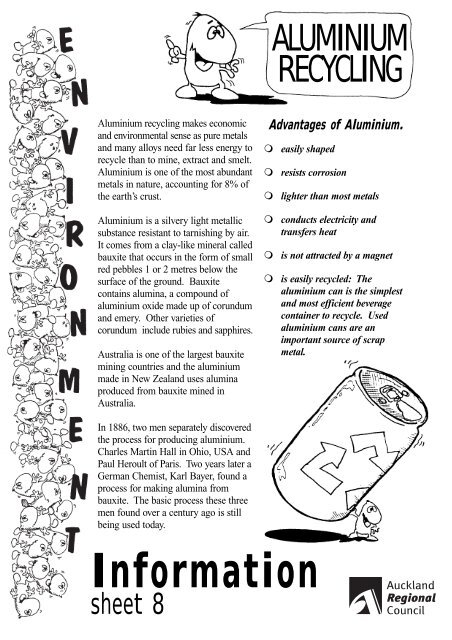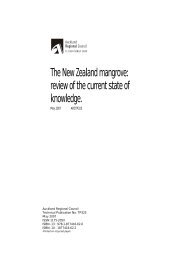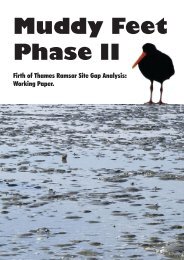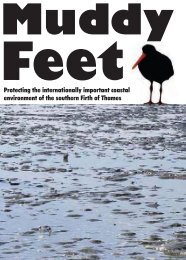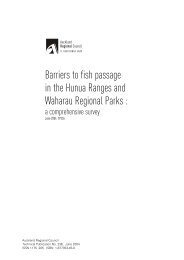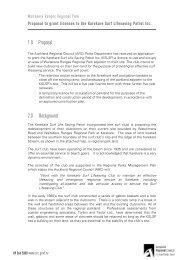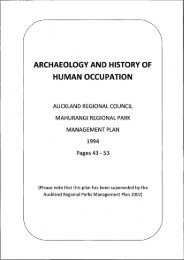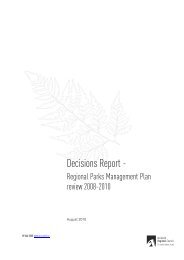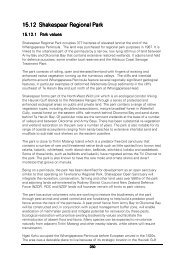ALUMINIUM RECYCLING - Auckland Regional Council
ALUMINIUM RECYCLING - Auckland Regional Council
ALUMINIUM RECYCLING - Auckland Regional Council
Create successful ePaper yourself
Turn your PDF publications into a flip-book with our unique Google optimized e-Paper software.
Aluminium recycling makes economic<br />
and environmental sense as pure metals<br />
and many alloys need far less energy to<br />
recycle than to mine, extract and smelt.<br />
Aluminium is one of the most abundant<br />
metals in nature, accounting for 8% of<br />
the earth’s crust.<br />
Aluminium is a silvery light metallic<br />
substance resistant to tarnishing by air.<br />
It comes from a clay-like mineral called<br />
bauxite that occurs in the form of small<br />
red pebbles 1 or 2 metres below the<br />
surface of the ground. Bauxite<br />
contains alumina, a compound of<br />
aluminium oxide made up of corundum<br />
and emery. Other varieties of<br />
corundum include rubies and sapphires.<br />
Australia is one of the largest bauxite<br />
mining countries and the aluminium<br />
made in New Zealand uses alumina<br />
produced from bauxite mined in<br />
Australia.<br />
In 1886, two men separately discovered<br />
the process for producing aluminium.<br />
Charles Martin Hall in Ohio, USA and<br />
Paul Heroult of Paris. Two years later a<br />
German Chemist, Karl Bayer, found a<br />
process for making alumina from<br />
bauxite. The basic process these three<br />
men found over a century ago is still<br />
being used today.<br />
Information<br />
sheet 8<br />
<strong>ALUMINIUM</strong><br />
<strong>RECYCLING</strong><br />
Advantages of Aluminium.<br />
� easily shaped<br />
� resists corrosion<br />
� lighter than most metals<br />
� conducts electricity and<br />
transfers heat<br />
� is not attracted by a magnet<br />
� is easily recycled: The<br />
aluminium can is the simplest<br />
and most efficient beverage<br />
container to recycle. Used<br />
aluminium cans are an<br />
important source of scrap<br />
metal.
<strong>ALUMINIUM</strong> PRODUCTION<br />
Aluminium production involves three stages.<br />
1. The mining of bauxite ore.<br />
2. Refining:<br />
The refining of bauxite to extract its<br />
alumina. The bauxite is crushed and<br />
mixed with<br />
caustic soda which removes impurities.<br />
This leaves a fine white powder that is<br />
heated to remove any moisture, leaving<br />
pure aluminium oxide (alumina) which is<br />
made up of aluminium and oxygen.<br />
Alumina, as well as being used to make<br />
aluminium metal is important to the chemical,<br />
ceramics, electrical and petroleum industries.<br />
3. Smelting<br />
To make aluminium it is necessary to<br />
separate the two elements in alumina.<br />
Electricity is passed through the alumina<br />
(electrolysis) separating the oxygen and<br />
leaving the pure aluminium.<br />
Following this, small amounts of other<br />
elements (such as magnesium, silicon or<br />
manganese) are added to the molten<br />
aluminium to give it added strength,<br />
increased resistance to corrosion or better<br />
casting properties. Different elements give<br />
different alloys.<br />
It is poured into moulds to solidify into<br />
shapes such as ingots, blocks or logs and is<br />
known as primary aluminium. From here<br />
it is exported to customers to be<br />
manufactured into products.<br />
It takes 4 tonnes of bauxite to<br />
produce 2 tonnes of alumina which<br />
in turn wi l produce 1 tonne of<br />
aluminium.<br />
MANUFACTURING<br />
Aluminium can be made into many different<br />
shapes using different processes.<br />
Rolling<br />
The aluminium is squashed between rollers<br />
into thin sheets, plate or foil. Plate is 6mm or<br />
thicker, sheet is from 0.15mm to 6mm and<br />
foil is less than 0.15mm thick.<br />
Extruding<br />
Aluminium is extruded by forcing hot round<br />
logs of the metal through a pattern cut in a<br />
steel die. The main uses of extruded<br />
aluminium are in the building trade, door and<br />
window frames, shop fronts and security<br />
screens, road and rail applications, and in<br />
engineering, made into machinery<br />
components.<br />
into wheels in<br />
Australia.<br />
These are<br />
sold all over<br />
Casting<br />
Aluminium is cast
the world to Japanese<br />
and European car manufacturers.<br />
WHY RECYCLE?<br />
� Saves energy<br />
� Conserves natural resources of bauxite<br />
� Reduces environmental pollution<br />
� Avoids waste<br />
� Saves landfill space.<br />
For every 140 million aluminium cans<br />
recycled, some 40,000 cubic metres of<br />
landfill space is saved.<br />
Large amounts of energy are used in the<br />
manufacture of primary aluminium from<br />
bauxite. Once the aluminium is in metal form<br />
it can be melted over and over again using<br />
only 5% of the energy used to make primary<br />
aluminium - an energy saving of 95% per<br />
tonne of secondary metal produced.<br />
The most important source of recycled<br />
aluminium is used aluminium cans. Each<br />
tonne of cans saves about 5 tonnes of<br />
bauxite.<br />
Comalco buys cans and sells the crushed<br />
bales to either Japan or Australia where they<br />
are remelted. From aluminium ingots come<br />
rolls of metal sheets which are<br />
remanufactured into new beverage cans.<br />
Aluminium is used in many every day<br />
products. These include drink and food<br />
cans, window frames, furniture, cars, ships,<br />
aircraft, cooking utensils, solar heaters,
insulation, motor mowers, insect screens,<br />
sports equipment, roofs, electric wire and<br />
cable, and aluminium foil for packaging and<br />
use in the kitchen.<br />
How You can help<br />
to recycle aluminium:<br />
� Aluminium Cans<br />
Rinse out and place them in your recycling<br />
bin if you have a kerbside collection.<br />
You may also take your aluminium cans<br />
to the following places:<br />
�<br />
�<br />
�<br />
For further information<br />
<strong>Regional</strong> Waste<br />
Private Bag 92 012<br />
<strong>Auckland</strong><br />
Your local transfer station<br />
Public drop-off facilities at schools,<br />
car parks and kindergartens<br />
“Cash for Cans” Drop-off facilities<br />
Ph 579-5127 or<br />
Toll Free Number 0800 254 226<br />
� Other Aluminium Products<br />
These may be taken to your nearest recycling<br />
centre or to your nearest scrap metal dealer.<br />
❄ Acknowledgements<br />
ARC Wasteline (09) 366-2070<br />
February 1999<br />
PRINTED ON 100% POST CONSUMER RECYCLED PAPER<br />
We would like to acknowledge with thanks Comalco (NZ) Ltd,<br />
<strong>Auckland</strong> for assisting with the information in this pamphlet.
NOTES


